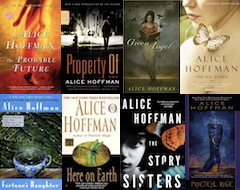Symbols and archetypes are powerful fairy tale elements. Both activate the unconscious and the imagination.
What is a symbol? It's an object that represents or stands in for an idea, belief, action, or something else. The glass slipper in Cinderella, the shard of broken mirror in The Snow Queen, Rumpelstiltskin weaving straw into gold.
What is an archetype? At its most basic, it's a role—one that we all grasp at an instinctual level, the King, the Queen, the Joker, the Thief.
By making use of symbols and archetypes, stories that might be considered simple become more complex, as they radiate through each individual in a personal way. Profound understandings and connections can be quickly sparked, through images that tap into deeper levels of consciousness. Because no matter how many times, nor how many ways, fairy tales are told and retold, we add our own inner details to Cinderella, the Evil Stepmother, Sleeping Beauty, the Wicked Witch, the Big Bad Wolf, and the Deep Woods.
Over and over, the relatable psychological symbolism of fairy tales, serve as a short-hand for bridging individuals with universal truth. Pretty much, in a way that other stories can't. I think that's why fairy tales are so enduring, why we tell them and re-tell them. And why they are so darn satisfying.
The Tarot is a set of cards that, like fairy tales, have been around for a long time. There are hundreds of different tarot decks, kind of like the many fairy tale retellings. An individual artist puts their personal spin on an archetypal image. The image isn't replaced, it simply wears a different set of clothes.
I thought it would be fun to show the tarot spread I created for The Girl Who Watched for Elves, one of the short stories that serves as a prelude to the Once Upon a Time Today collection. One of the things you might notice is that tenth card in the spread, the one on the bottom row on the far left, 'the elf card,' doesn't appear exactly as it's described in the story.
The Twenty-Card Spread in The Girl Who Watched for Elves ~ Hanson-Roberts Tarot Deck
That's because the story was written by combining the images from the above deck, with the most traditional and popular tarot deck, the Rider-Waite deck.
Now, take a look at the "Eight of Pentacles" in that deck. Ask yourself: If you saw that picture, would you see an elf? Possibly—probably—not! But during the tarot reading in the story, Heather was taking a trip down memory lane, and she knew the next chapter in her story was her reunion with her grandmother. She also know how much the story, The Shoemaker and the Elves, meant to her. She saw the card, according to her personal history. That's what we do with symbols and archetypal images. We personalize them. Because of their simplicity, it's almost impossible not to.
Transformational themes, symbols, archetypes—these elements contribute to the enduring and beguiling nature of fairy tales.



















